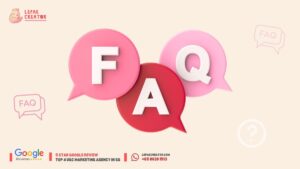In today’s digital landscape, influencer marketing has emerged as a highly potent sales strategy, owing to the sheer abundance of influencers and the trust they cultivate with their dedicated followers. However, mastering this approach can pose significant challenges.
Not all influencers are cut from the same cloth, so discerning which ones align most effectively with your business goals is paramount when orchestrating an influencer marketing campaign. If you’re seeking guidance on identifying the ideal influencers and pinpointing the most opportune moments to collaborate, read on. We delve into the various tiers of influencers and offer insights into their strategic utilization.
Luckily, regardless of whether you operate as a large-scale corporation or a smaller business, Instagram influencer marketing holds potential for your brand. In this article, we’ll guide you through the process of identifying and collaborating with Instagram influencers, offering valuable insights and strategies for executing a prosperous campaign.
What is Instagram influencer marketing?
An Instagram influencer marketing strategy leverages influencers and micro-influencers with active and engaged Instagram followers to endorse your product. Through the creation of sponsored content, including photos, giveaways, videos, and Stories, these influencers can spark conversations and generate buzz around a brand or product.
Popular influencer niches include:
- Fashion
- Lifestyle
- Beauty
- Travel
- Tech
- Home and Interior
- Pets
- Photography
What constitutes an Instagram influencer? The definition has evolved over time. Initially, influencers were synonymous with accounts boasting substantial followings.
However, brands soon discerned that a hefty follower count didn’t necessarily translate into substantial sales. Consequently, they shifted their focus toward content creators and bloggers with smaller followings, commonly referred to as nano-influencers. Sponsored posts from these creators often exude a heightened sense of authenticity compared to those from larger accounts.
Today, there are five types of influencers:
- Nano: 1,000–10,000 followers
- Micro: 10,000–100,000 followers
- Mid-tier: 100,000–500,000 followers
- Macro: 500,000–1 million followers
- Mega: 1 million+ followers
According to a report by Influencer Marketing Hub, brands show a clear inclination for collaborating with nano-influencers (39%) and micro-influencers (30%), favoring them over the more costly macro-influencers (19%) and celebrities (12%).
Consider these influencers niche-specific Instagram celebrities. They’ll promote your product to their audience in exchange for compensation, free products, or memorable experiences.
Creating a Successful Instagram Influencer Marketing Strategy
- Know your “why”
- Keep your goals in mind
- Decide on a budget
- Decide if the influencer is a brand fit
- Check engagement rates
- Create an influencer media kit
- Make outreach as personal as possible
Nano-Influencers
Interested in broadening your reach through influencers? There are various tiers to explore. Nano-influencers, for instance, have relatively smaller followings on social media with relatively smaller followings, typically ranging from 1,000 to 10,000 followers. Their ability to provide personalized recommendations is enhanced by their more intimate and less public social media presence. Surprisingly, in terms of conversion rates, a nano-influencer can rival the influence of traditional celebrities or even micro-influencers. If your goal is to cultivate intimate connections with an audience, nano-influencers are the ideal choice.
Micro-Influencers
For those venturing into influencer marketing for the first time, nano-influencers and micro-influencers serve as excellent entry points for acquainting yourself with the practice. Micro-influencers, typically having follower counts ranging from 10,000 to 50,000, excel in providing product reviews and inspiring audience engagement in shopping. They differ from celebrities in that they actively engage with their audience and fall into the category of small-scale influencers, delivering a more authentic voice due to their smaller, more dedicated follower base.
Mid-Tier Influencers
Sitting between micro-influencers and macro-influencers are mid-tier influencers, boasting follower counts ranging from 50,000 to 500,000. They can prove to be more potent than micro-influencers due to their engaged following, which already shows a vested interest in their content. If you’re contemplating an influencer marketing strategy, mid-tier influencers present an excellent choice, though it’s essential to bear in mind that influencers with larger followings command higher fees. This tier of influencers excels in activities such as social media takeovers, hosting contests and giveaways, conducting product reviews, and much more.
Macro-Influencers
While the majority of brands opt for micro-influencers, some may set their sights on a larger-scale approach. In the realm of influencers with 500,000 to one million followers and beyond, we find macro-influencers, who command premium rates compared to their counterparts. Despite their broad reach, it’s important to note that macro-influencers may not inherently excel at converting customers. There’s a notable drop-off in their effectiveness between audience reach and influence on their followers.
Mega-Influencers
Mega-influencers, often boasting over a million followers and often synonymous with celebrities, might not necessarily align with your product or brand ethos. The challenge lies in the fact that due to their immense follower count, capturing their attention and engaging them on your platform can be arduous. They might use your platform to promote themselves and then move on, unless they genuinely have an interest in your product. To pique the interest of a mega-influencer, innovative approaches are essential, such as crafting a creative brief, tailoring messages to the specific influencer, identifying those who share a connection with your brand, and more.
Are These Influencer Tiers Relevant In All Niches?
Influencer marketing has emerged as a prominent strategy for brands aiming to connect with their social media audiences. Numerous influencer marketing platforms and agencies traditionally match influencers based on metrics such as follower counts and engagement rates. However, it’s vital to recognize that these categories may not universally apply to every niche. The key lies in comprehending your target audience’s specific requirements prior to selecting an influencer or utilizing an influencer platform. Additionally, factoring in your budget during this decision-making process proves crucial, as it will guide your choice of the most suitable tier of influencers for your brand and marketing campaign.
Get Started With Influencer Marketing Today
Are you looking to bring in more business? Check out what our influencer marketing services can do for your business. You’ve likely heard about it but have questions, right? Contact us today to get started on your influencer journey. We’re here to help!
👉🏻 Look out for the latest Marketing & related Tips @lepakcreator Telegram Channel!
(Credits: Pexels)
Since you’re here, why not Read:




